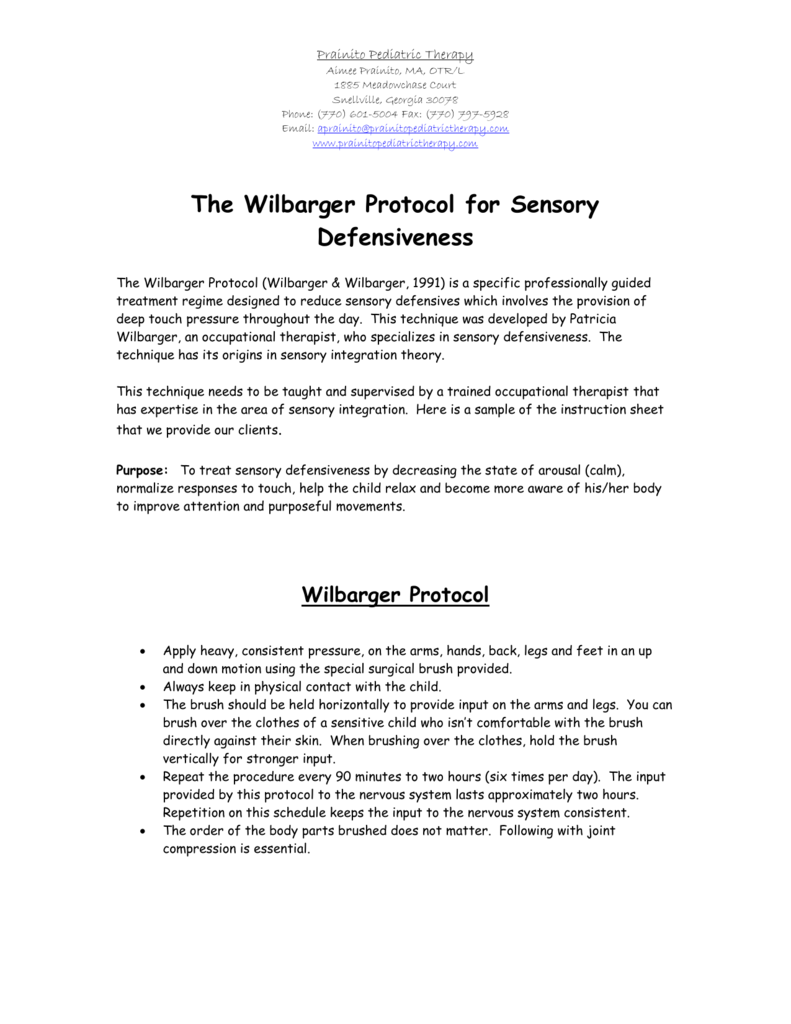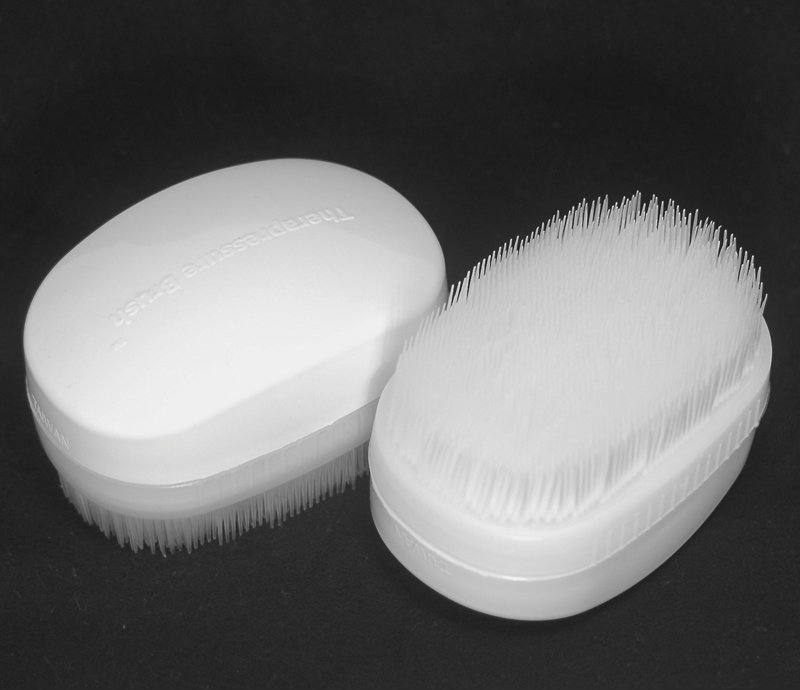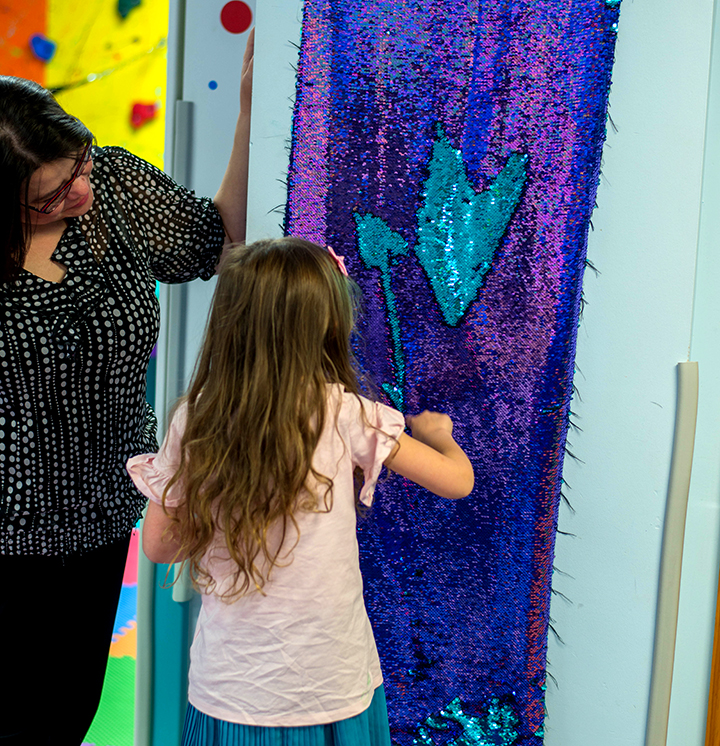
Wilbarger Brushing Protocol Who Can Do It? Wilbarger brushing
The Wilbarger Deep Pressure and Proprioceptive Technique (DPPT) & Oral Tactile Technique (OTT) The Wilbarger Deep Pressure and Proprioceptive Technique (DPPT) & Oral Tactile Technique (OTT), which in the past was referred to as the Wilbarger Brushing Protocol, refers to the specific sensory modulation techniques developed by Patricia Wilbarger, MEd, OTR, FAOTA. Patricia Wilbarger is an.

Blog PlayWorks Therapy Inc. Pediatric Therapy Services Chicago
Implementation of the Wilbarger Deep Pressure and Proprioceptive Technique (DPPT), sometimes referred to as "The Brushing Program", in conjunction with a sensory diet, is recommended to help decrease sensory defensiveness.

Wilbarger Brushing Protocol Joyful Journey Mom Sensory disorder
Wilbarger Protocol: An Evidence Review. OT Practice, 8(12), CE1 - CE8. On the basis of this review, emerging evidence supports the use of a brushing intervention, such as the Wilbarger Protocol, specifically for persons who present with overresponsiveness. Because of the limited empirical evidence supporting or refuting the effectiveness of the

Escovacao Sensory diet, Pediatric physical therapy, Sensory
The Wilbarger Protocol, also known as Brushing Therapy, or The Wilbarger Deep Pressure. Protocol (WDPP) utilizes deep touch pressure and joint proprioception. The Wilbarger protocol aids children in sensory processing and integration for decreased seeking or defensiveness of tactile/touch and proprioceptive/muscle position stimuli.

Wilbarger Brushing Protocol (OT Brushing Joint Compressions), via
Wilbarger Brushing Protocol (OT Brushing & Joint Compressions) sc5mu93 1.07K subscribers Subscribe Subscribed 2.9K Share 524K views 12 years ago Davis gets his "Brushies and Squishies." Also.

The Wilbarger Protocol for Sensory Defensiveness
THE WILBARGER PROTOCOL FOR SENSORY DEFENSIVENESS (Please do not reproduce Deep Pressure and Proprioceptive Technique (DPPT) received face to face distribute instruction handout. a trained occupational be used only therapist.) by someone We discrimination. have two ways or not we need to respond to it.

Brushing Sensory awareness, Sensory disorder, Kids sensory activities
Wilbarger Protocol is not firmly established, therefore, all articles that examined the use of the Wilbarger protocol were considered in the evidence findings. Keywords: Sensory Defensiveness, Sensory Treatment, Occupational Therapy, Wilbarger Protocol, Brushing Therapy, Brushing Technique in Treatment.

The Wilbarger Protocol (Brushing Therapy) for Sensory Integration
The Wilbarger Brushing Protocol also known as DPPT is a very specific technique used for tactile defensiveness and sometimes other sensory processing challenges. The technique can be effective, BUT it is misunderstood, and often not taught correctly, and way over used in my professional opinion.

Wilbarger Therapy Brush, 6 Pack Therapressure Brush for Occupational
What Is The Wilbarger Brushing Protocol? The Wilbarger Deep Pressure and Proprioceptive Technique was developed by Patricia Wilbarger, Med, OTR, FAOTA. Based on the theory of Sensory Integration, the brushing technique uses a specific method of stimulation to help the brain organize sensory information.

The Sensory People — Awesome chart on the Wilbarger Brushing Protocol
Benefits of DPPT: -Decrease in tactile defensiveness (increased tolerance in wearing clothes, being touched/held) -Improved ability to transition between activities -Improved attention -Improved sensory regulation -Improved body awareness The Brushing:

Individual OT and Modalities — Sensational Development
Wilbarger brushing protocol, a sensory integration technique. This video introduces Occupational therapy students or families on what brushing protocol is an.

Wilbarger Brushing Protocol Performance Pediatrics
The input the Wilbarger protocol is. providing is known to last in the system for that amount of time, so it is necessary to repeat to. help keep the individual in the optimal zone of sensory modulation. If the protocol is going to be. effective for the patient, positive changes will be seen within several days.

The Wilbarger Protocol (Brushing Therapy) for Sensory Integration
The Wilbarger Protocol is designed to be used in conjunction with an individualized sensory "diet" based on the specific needs of the child and carried out under the guidance of someone familiar with the protocol and trained in sensory integration theory and practice.

Wilbarger Brushing Protocol Performance Pediatrics
The Wilbarger Protocol for sensory defensiveness. First let's clarify some terms. Did you know the NEW name for The Wilbarger Protocol (what some used to call the Wilbarger Brushing Protocol, or WBP) is now The Wilbarger Deep Pressure and Proprioceptive Technique (DPPT)?

The Wilbarger Protocol (Brushing Therapy) for Sensory Integration
The Protocol The DPPT uses a specific pattern of stimulation delivered using a special type of brush and gentle joint compressions. It is believed to facilitate the coordination of mind-brain-body processes in a manner that influences positive change.

AUTISM Sensory Wilbarger Brushing ZVibe Tips Tricks Toys 16 Sensory
The Wilbarger deep pressure and pro-prioceptive technique (DPPT), which in the past was referred to as the Wilbarger Brushing Protocol, refers to the specifi c sensory modulation techniques developed by Patricia Wilbarger, MED, OTR, FAOTA. WHAT IS DPPT USED FOR: DPPT was created to help address sensory defensiveness.